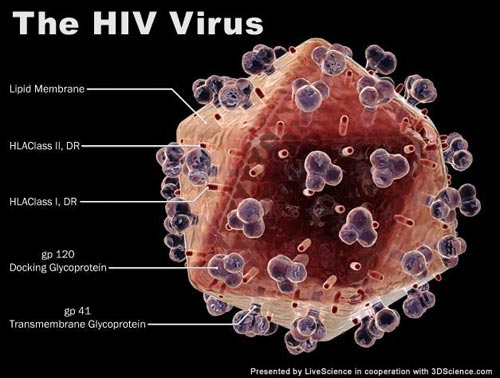Detecting compound 'lock' is HIV virus
Researchers at the University of Minnesota have identified a compound that can prevent the transmission of another strain of HIV on primates, called SIV.

This discovery, introduced in the March 5 issue of Nature, offers hope for a new way to prevent HIV infection in humans.
The team at the University of Minnesota focused on a compound called glycerin monolaurate (GML), a substance widely used in some foods and cosmetics.
In this study, two weeks after exposure to SIV, five monkeys treated with a gel containing GML resulted in no infection. Meanwhile, four in five monkeys in the group that did not use GML gel were infected with SIV.
This compound does not kill viruses but prevents immune reactions that do not work to help the virus spread.
Lead researcher Dr Ashley Haase said that GML could provide a new and more effective way to fight HIV, including other sexually transmitted diseases in women.
But he warned that the study was small and only tested in animals. There is much work to do before human trials take place.
- Fingerprint lock
- The formation and development of locks and keys
- Garlic against infection in children
- Bicycle lock with pedal
- Find out which antiviral compound causes SARS and MERS
- Anti-theft bike lock unique
- Tips for making door lock easily from ... plate
- Lock the computer temporarily by
- CD-DVD Lock 2.4 - No need to lock folders
- The lock is as small as a molecule
- Discover extremely sophisticated locking systems from the 17th century
- Compounds that are more expensive than 30,000 times are found from rice
 Green tea cleans teeth better than mouthwash?
Green tea cleans teeth better than mouthwash? Death kiss: This is why you should not let anyone kiss your baby's lips
Death kiss: This is why you should not let anyone kiss your baby's lips What is salmonellosis?
What is salmonellosis? Caution should be exercised when using aloe vera through eating and drinking
Caution should be exercised when using aloe vera through eating and drinking